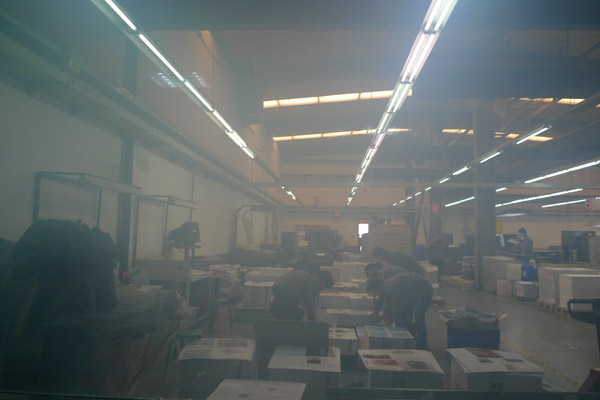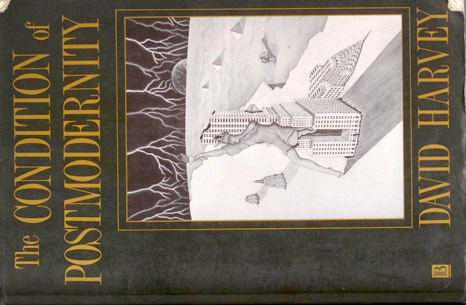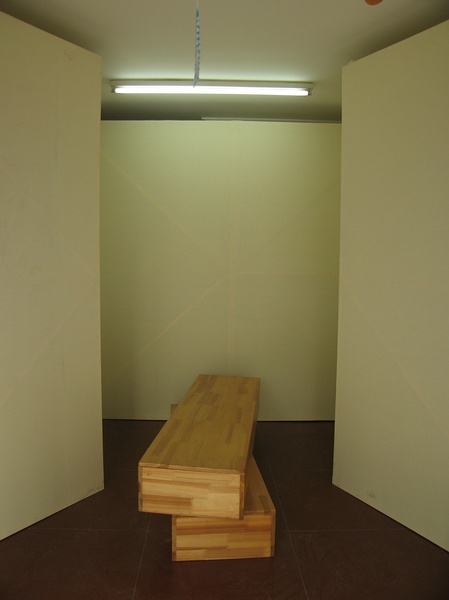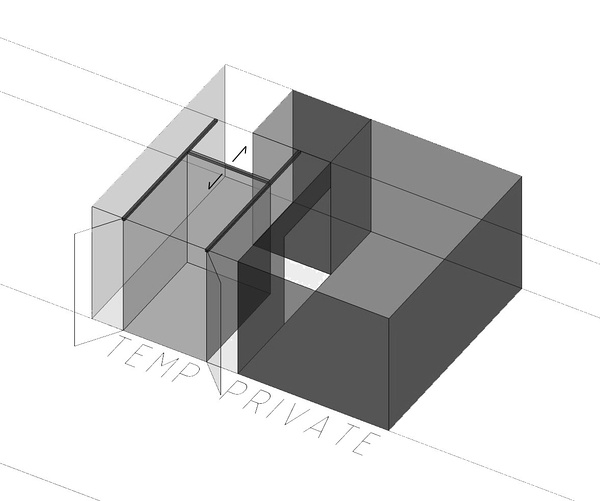[originally posted 31 December 2009 by HappyFriendsReadingClub 欢乐读者俱乐部 at Our Vitamin: 交叉小径的花园 Garden of Forking Paths]
 Architect daucle‘s installation at HomeShop contracted or expanded between planes of public and private, opening up varying usages of space according to daucle’s working hours. On the left, daucle is at home; on the right, daucle is at work.
Architect daucle‘s installation at HomeShop contracted or expanded between planes of public and private, opening up varying usages of space according to daucle’s working hours. On the left, daucle is at home; on the right, daucle is at work.
Happy Friends Reading Club met at HomeShop in Xiaojingchang Hutong at 8pm on December 14th. A convertible stretcher and canvas installation by architect Claude Tao provided a setting for dialogue, which from outside on the street resembled a shallow-depth stage for a chamber drama. A small round table loaded with bottles of beer held the center; the fluorescent tubes above flattened the off-white cube: TV space.
The reading was a substantial passage from David Harvey’s The Condition of Postmodernity from 1990. Written on the other side of the postmodernism hump, Harvey had much material to go over, and many interpretations to play off each other. As the observations of a geographer, Harvey’s book puts space in a central role. But one of the most intensely-felt accomplishments of the postmodern age is the twisting of space and time around each other, annhilating their former understandings. Harvey points out that earlier theoretical formulations of postmodernism, such as those of Fredric Jameson (Postmodernism or, The Cultural Logic of Late Capitalism, first published 1984) in which he called for a program of “cognitive mapping” in the midst of the disorienting effects of late-capitalism, neglected to examine in-depth the received conceptions of space and time, and their variations under varying regimes of time-space use.

Harvey therefore sets to the task of describing several of them, from the (gendered) cycles of peasant lives to the more recent mastery over space by processes of “flexible accumulation” (flexibility with respect to labour processes, labour markets, products and patterns of consumption). He outlines a tripartite diagram of spaces (with diagrams themselves as a category contributing a significant position in a spectrum of spaces) and presents a typology of social times as assembled by Georges Gurvich.
He refers to the theorists who have tried to define time and space in historical and phenomonological terms: space marking social reproduction and control (Foucault); space produced through use and necessity (de Certeau); time memorialized not as flow but as still memories, and history as poetry (Bachelard); the social practices that produce space and time mediated by a “durably installed generative principle of regulated improvisations”– by social formation, or “habitus” (Bourdieu).
Harvey’s discussion measures all of these attempts at grasping definitions of time and space against the ever-mutating capitalist determinations and uses that structure the world at large. For instance, Harvey plays “place” off against “space,” the former (place) marking the limits that revolutionary or worker movements are able to effect; the latter (space) falling more and more, through technologies and social and political crises, under the control of capital–workers can occupy a factory, but not the distribution or transport networks, nor the distances in between the financial centers and the developing nations to which their jobs are being shifted.
Through the terms of geography, Harvey’s critique points out that “the ‘othernesses’ and ‘regional disturbances’ that postmodernist politics emphasize can flourish in a particular place. But they are all too often subject to the power of capital over the coordination of universal fragmented space and the march of capitalism’s global hisorical time that lies outside the purview of any one of them.”
The members of Happy Friends who were present for the discussion agreed that Harvey’s text, written in 1990, seemed remarkably apt at describing the current crisis-ridden moment accompanying the deterritorialization of the internet and political and social changes that occurred in the 20 years since the text was written. Harvey’s observations were uncannily prescient. For that reason, it is unsurprising that they have been almost entirely subverted in the last 2 years. Space has been digitally re-imaged such that the crevasses formerly separating places are so miniscule as to require decades of travel before one’s limbs are fatigued by the traverse. The flattening imposed on space and time by their masters (cartographic satellites, information engineers and, above all, transportation-communication industry) has progressed neither unidirectionally nor fractally. Control of invisible space can be used to localize as much as to globalize, to connect as to disconnect. Whether one is in Beijing or Urumqi or Asia, space is predicated on will and place is a dialectic between space and the individual. To quote the author, “If there are limits to the accumulation and turnover of physical goods…then it makes sense for capitalists to turn to the provision of very ephemeral services in consumption.” The question is how to limit infinitude.
One late-arriving participant made a meta-observation on the group that had been discussing, trying to identify the positions of those sitting around the round table: the Foucauldian, the Marxist, the Eastern philosopher… those appointed squirmed uncomfortably.
There were other attempts at vocabularies to describe the differences between postmodernism and modernism. Using one of the paper cups as an object-diagram of time, one participant pointed at the lip and the space that it contained; this was an argument for space-as-place.
about description and understanding
Information is over-visualized, which means everything is too specific today. Specific means clear, means shortening the time of understanding, means efficiency, means capitalism. On every billboard, a man is a man, a hamburger is a hamburger, a man eating a hamburger is a man eating a hamburger, a man feels happy when eating a hamburger is a man feels happy when eating a hamburger. It’s a kind of over-description. We enjoy description, because every complete description makes us feel that ‘we are right’. But description can make everything right. A disadvantage of description is, it truly lowers people’s capability of understanding. I consider understanding as of the same importance as description, a profitable communication is based on the balance of description and understanding. Brother Qu said modern art is hard to understand but classic art seems much easier to understand. The answer is Yes if we consider classic art is a kind of advertisement.
The object lesson dissipated to the interstices of the discussion; one participant commented that this is what most Taoist interjections do. Other labels for the promiscuous and not mutually exclusive dichotomies of space/time, post/modernism, included: pleasure, usefulness, efficiency, recycling.





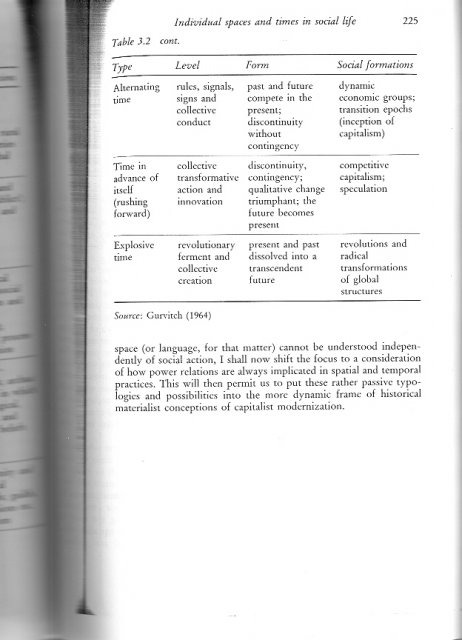


 时间 posted on: 27 May 2010 |
时间 posted on: 27 May 2010 |  发布者 author:
发布者 author: 
 分类 filed under:
分类 filed under: 


